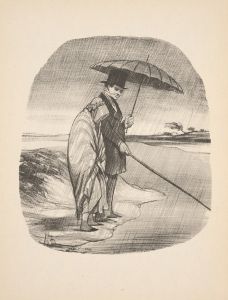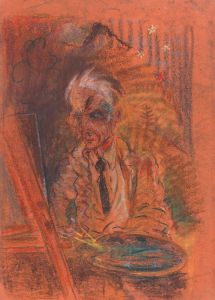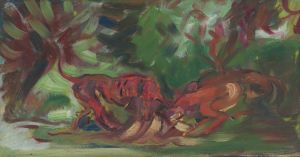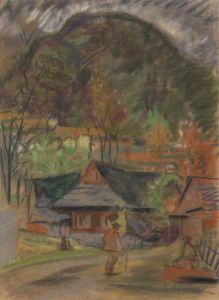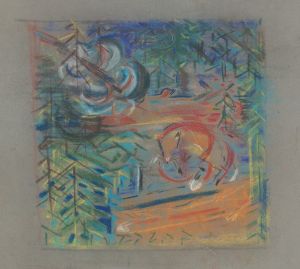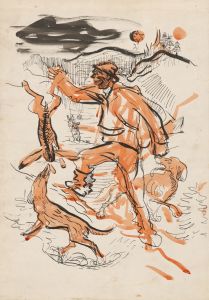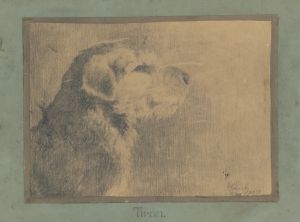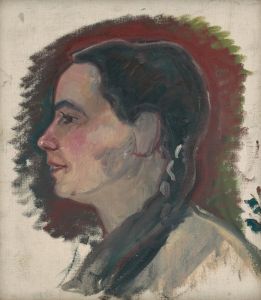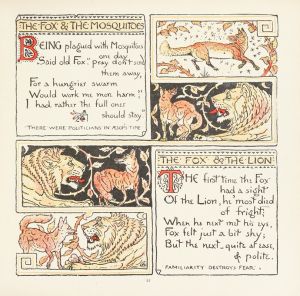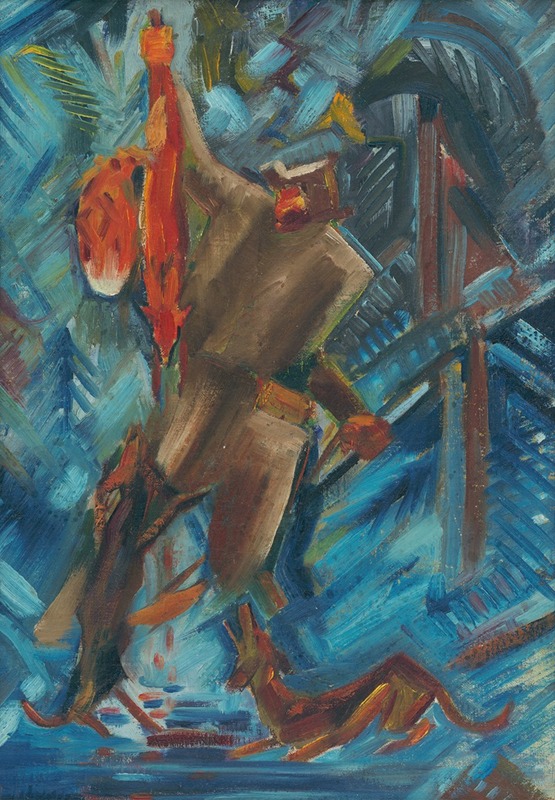
Hunter with a Fox in His Hand
A hand-painted replica of Arnold Peter Weisz-Kubínčan’s masterpiece Hunter with a Fox in His Hand, meticulously crafted by professional artists to capture the true essence of the original. Each piece is created with museum-quality canvas and rare mineral pigments, carefully painted by experienced artists with delicate brushstrokes and rich, layered colors to perfectly recreate the texture of the original artwork. Unlike machine-printed reproductions, this hand-painted version brings the painting to life, infused with the artist’s emotions and skill in every stroke. Whether for personal collection or home decoration, it instantly elevates the artistic atmosphere of any space.
Arnold Peter Weisz-Kubínčan was a Slovak-Jewish painter born in 1898 in Dolný Kubín, Slovakia. He is known for his unique artistic style, which combined elements of symbolism, expressionism, and surrealism. His works often explored themes of human existence, spirituality, and the natural world. However, due to the tragic circumstances of his life and the limited documentation of his oeuvre, much of his work remains relatively obscure.
One of his notable paintings, Hunter with a Fox in His Hand, reflects Weisz-Kubínčan's characteristic style and thematic focus. The painting depicts a hunter holding a fox, rendered in a manner that blends realistic detail with symbolic undertones. The composition suggests a tension between humanity and nature, a recurring theme in the artist's body of work. The fox, often a symbol of cunning and survival, may carry deeper metaphorical significance, though interpretations vary.
Weisz-Kubínčan's career was tragically cut short during World War II. As a Jewish artist living in Slovakia during the Holocaust, he faced persecution under the Nazi regime. In 1944, he was deported to a concentration camp, where he is believed to have perished. Many of his works were lost or destroyed during this period, making surviving pieces like Hunter with a Fox in His Hand particularly valuable for understanding his artistic legacy.
The painting is part of a limited collection of Weisz-Kubínčan's surviving works, which are now held in various museums and private collections. These pieces provide a glimpse into the creative vision of an artist whose life and career were tragically interrupted. Due to the scarcity of information and surviving documentation, further details about the painting's creation, provenance, and specific interpretations remain limited.
Weisz-Kubínčan's work continues to be studied and appreciated for its emotional depth and artistic innovation. His legacy serves as a poignant reminder of the cultural contributions lost during the Holocaust and the enduring power of art to transcend historical tragedy.






